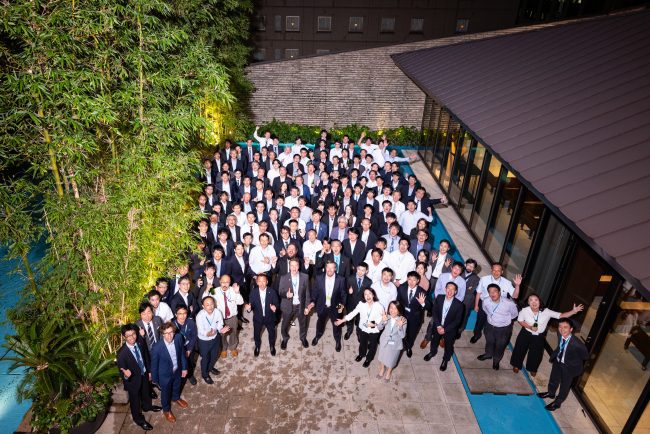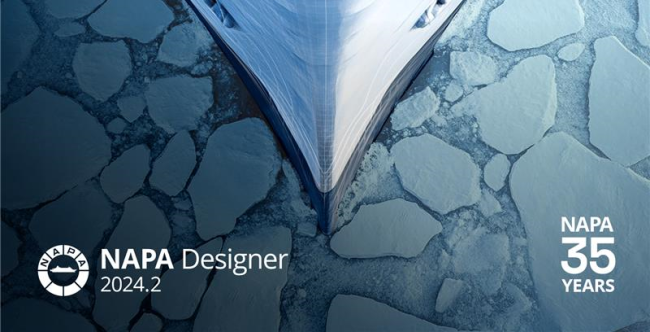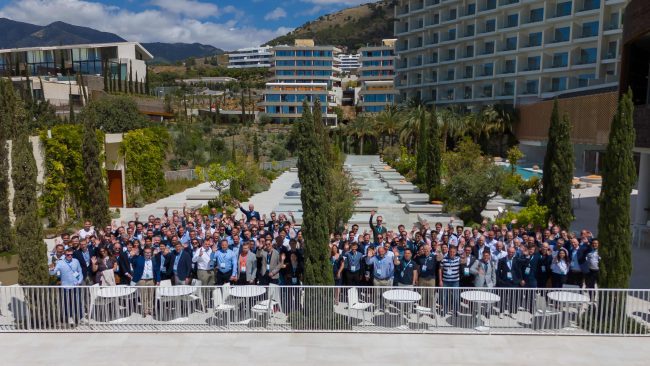NAPA User Webinars 2020: NAPA Product News (1/5)
NAPA User Meeting 2020 went online
Our valued global partners and users traditionally gather in Finland for the annual NAPA User Meeting, a robust training event consisting of seminars, workshops, hands-on testing and networking. Although we were unable to gather this year in person, we sought to ensure our users were up to date with all the latest NAPA Design Solutions news and software updates and therefore ran a free series of NAPA User Webinars.
We will be recapping the key themes, highlights and user questions from each webinar to ensure the content is accessible to all our users, starting with the first in the series on product news.

Led by Jan Furustam, Director of Business Development, the session included updates on the latest news in relation to new features and improvements in NAPA’s product offering. From hull form and compartment modeling, stability calculations to structural design (NAPA Steel), FEM, online training services, and a renewed NAPAnet, the team explored a wide range of updates relating to existing NAPA design software. The team also discussed how they have adapted to working from home, an ongoing recruitment drive and new ways to help users working from home, such as online training and providing licenses.
Jan also talked about upcoming releases for NAPA Design, with NAPA 2020.2 soon to be released.
Webinar highlights
Hull Form Modeling – Antti Pösö, a Product Owner at NAPA, kicked off proceedings by providing an overview of updates to NAPA Hull Form Modelling software. The main changes being new commands for curve and point, and new features to improve modeling, such as change curve interpolation between M1 and M2, fixpoint and swap reference. Antti also carried out demonstrations in real-time to show how the changes worked.
Hydrostatics and Stability – Olli Puustinen, Director of Naval Architecture Products, updated recent developments to NAPA Hydrostatics and Stability, in line with SOLAS II- 1 amendments, such as amended index requirements for cargo and passenger vessels. Outside SOLAS II-1 amendments, Olli also provided updates to the functionality of applications, for example, new watertight and weathertight limits, performance improvements in line with the NAPA 20.1 release and updates to intact stability code amendments. Olli also carried out a live demonstration and spoke in further detail about all the technical changes and improvements.
NAPA Steel – Mikko Forss, Executive Vice President, provided a robust update on NAPA Steel, ensuring users that continuous investment in development, and close co-operation with end-users, were being maintained to continuously revolutionize 3D based early structural design. Major changes include improvements with corner notch definition, better control of bracket and openings, block system and list output, and updates to commenting, which is now out of BETA with a renewed UI for ease of operation to enable clarity when multiple users are working on one model. All changes have been made to ensure automatic production at classification drawings and meet a demand for superior user experience. Overall the major benefits, including being able to create more detailed 3D models more efficiently than before, better quality drawings with less effort and new interfacing and collaboration tools to improve design flow and minimize errors.
FEM in NAPA Designer – Myeong-Jo Son, Software Developer, discussed the changes to FEM (Finite Element Models) in NAPA Designer with the one significant change in FEM model modification being to the manual modification based on WireFrame, which ensures the mesh refinement for local analysis is now easy to apply. Myeong-Jo also provided a live demonstration and spoke in further detail about the technical updates.
Q&A highlights
Thank you to everyone who shared questions – our team was overwhelmed by the session’s response and engagement. We have outlined a few more general questions below – to view the full Q&A session, and for further insight into all the changes and technicalities discussed, please download the webinar in the link below:
Q- Can you check hydrostatics in NAPA Designer?
A –It is in our development list and should also be available in our 2020.2 release. There is also a script currently available for anyone requiring that function to check the hydrostatics of your present hull form.
Q – Are there any courses for students or naval architectures interested in learning NAPA software hull form modeling and design?
A – We are currently providing courses, or NAPA is being used in the courses at different universities in Europe and Asia. There is a long list of universities where students can use NAPA as part of their studies, and we ensure to use all the latest NAPA tools in the courses. More information about the universities having NAPA can be requested from customer.service@napa.fi. The training courses for the companies can be found on our website, here.
Q – Is there a trial of NAPA designer?
A- Please contact us at sales@napa.fi, and we can discuss the use case and provide a trial version.
Q – How do you see 3DMBA improving and how quickly do you think the industry will adapt to this?
A – Making a breakthrough in 3DMBA requires a lot of collaboration between class societies, designers and software providers to develop suitable tools for the process and develop the process itself. At NAPA, we currently work very closely with all the major class societies on this topic. We have already seen the early adapters testing this concept and implementing it in their daily processes. 3DMBA will become more accessible and more popular in the coming years.
Q – How can a naval architect land a job at NAPA?
A – We have open positions on our website – please visit our careers page for more information.
To download the full webinar, please go to NAPA Product News.
and for any further information on the NAPA product webinar, please contact: olli.puustinen@napa.fi


